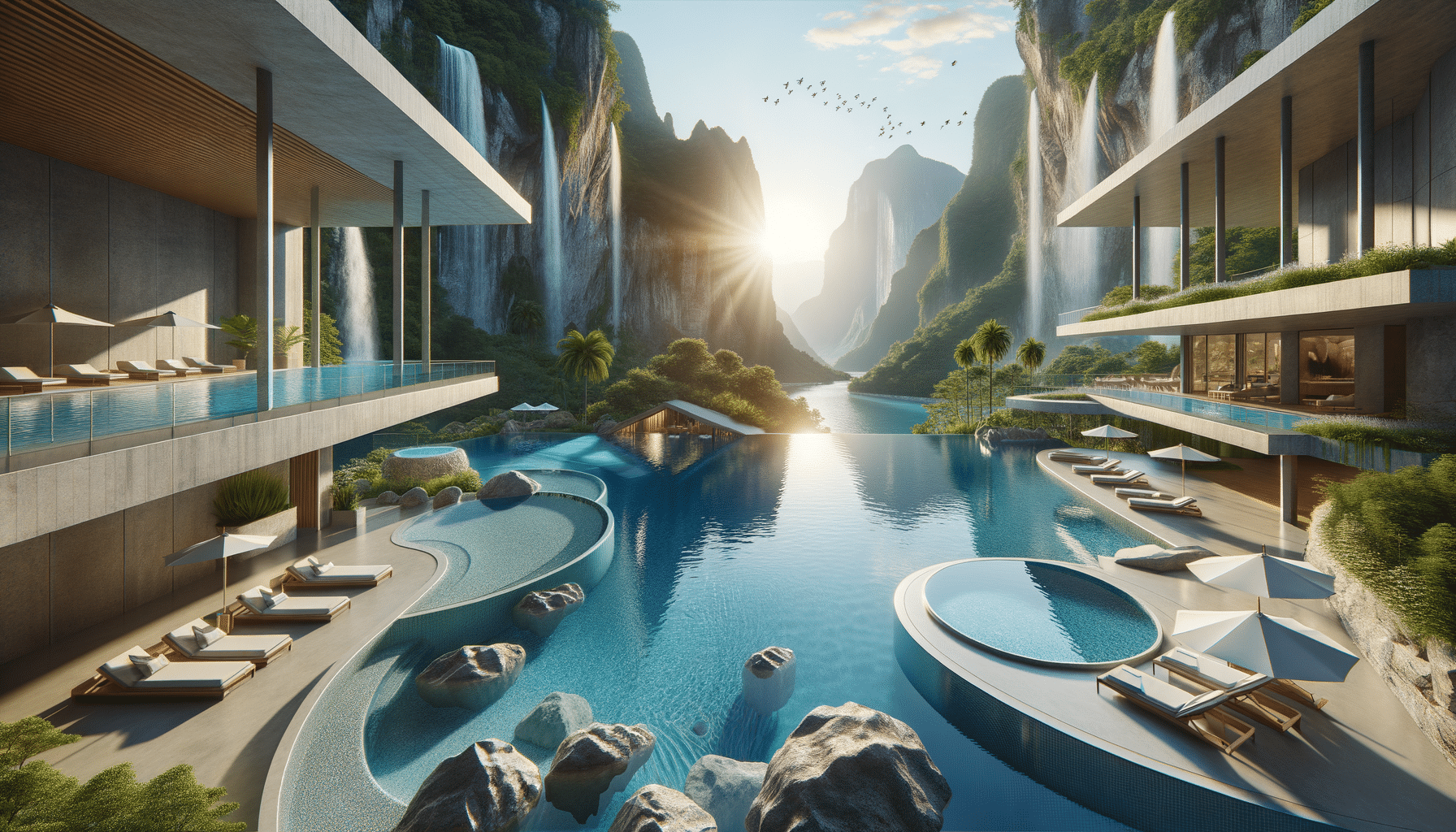
Explore the World of Outdoor Pools: A Comprehensive Guide
The Appeal of Outdoor Pools
Outdoor pools have long been a symbol of luxury and leisure. They offer a perfect blend of relaxation and recreation, making them a sought-after feature for many homeowners. An outdoor pool can serve as a centerpiece for social gatherings, a place for family fun, or a serene spot for personal relaxation. The versatility of outdoor pools makes them an attractive addition to any home, regardless of climate or location.
Outdoor pools come in various shapes and sizes, catering to different tastes and preferences. From the classic rectangular pool to more modern, freeform designs, the options are virtually limitless. These pools can be customized with features such as waterfalls, slides, and lighting to enhance their aesthetic appeal and functionality. Additionally, they can be complemented by landscaping elements, such as decks and patios, to create a cohesive outdoor living space.
Beyond aesthetics, outdoor pools offer numerous health benefits. Swimming is an excellent form of exercise that improves cardiovascular health, builds muscle strength, and enhances flexibility. It is also a low-impact activity, making it suitable for people of all ages and fitness levels. Moreover, the calming effect of water has been shown to reduce stress and promote mental well-being.
Types of Outdoor Pools
When considering an outdoor pool, it’s essential to understand the different types available. Each type has its own set of advantages and considerations, which can influence the decision-making process.
In-ground pools are a popular choice due to their durability and aesthetic appeal. They are typically constructed using concrete, fiberglass, or vinyl liner materials, each offering unique benefits. Concrete pools are highly customizable and can be designed in virtually any shape or size. Fiberglass pools, on the other hand, are pre-fabricated and known for their smooth surfaces and low maintenance requirements. Vinyl liner pools offer a cost-effective option with a variety of liner patterns and colors to choose from.
Above-ground pools provide a more affordable and flexible alternative. They are easier to install and can be dismantled if needed. These pools are available in various sizes and shapes, and they can be enhanced with decks and other accessories to improve their functionality and appearance.
For those seeking a more natural look, natural swimming pools are an innovative option. These pools use plants and biological filters to maintain water clarity, creating an eco-friendly swimming environment. They blend seamlessly with the surrounding landscape, offering a unique and sustainable swimming experience.
Design Considerations for Outdoor Pools
Designing an outdoor pool involves more than just choosing the shape and size. Several factors must be considered to ensure the pool complements the overall landscape and meets the needs of the users.
One crucial consideration is the pool’s location. Ideally, the pool should be situated in a spot that receives ample sunlight, as this helps maintain a comfortable water temperature and reduces heating costs. Additionally, the pool should be positioned to offer privacy and protection from wind, which can cool the water and create uncomfortable swimming conditions.
Safety is another important aspect of pool design. Installing a secure fence and gate around the pool area is essential to prevent unauthorized access, especially for households with young children. Pool covers and alarms can provide additional safety measures, offering peace of mind to pool owners.
Lighting is a key design element that enhances both safety and ambiance. Well-placed lights can illuminate the pool area for nighttime use while creating a welcoming atmosphere. Energy-efficient LED lights are a popular choice due to their longevity and low energy consumption.
Finally, consider the integration of the pool with the surrounding landscape. Incorporating elements such as plants, rocks, and water features can create a harmonious outdoor environment that enhances the pool’s aesthetic appeal.
Maintenance and Care of Outdoor Pools
Proper maintenance is crucial to ensuring the longevity and functionality of an outdoor pool. Regular upkeep not only keeps the pool looking its best but also ensures a safe and healthy swimming environment.
One of the primary maintenance tasks is balancing the pool’s water chemistry. This involves regularly testing and adjusting the levels of chlorine, pH, and alkalinity to prevent the growth of algae and bacteria. Using a pool water testing kit can help simplify this process, allowing pool owners to maintain optimal water conditions.
Cleaning the pool is another essential maintenance task. This includes skimming the surface to remove debris, vacuuming the pool floor, and brushing the walls to prevent the buildup of dirt and algae. Automatic pool cleaners can be a valuable tool in maintaining a clean pool with minimal effort.
In addition to regular cleaning, it’s important to check and maintain the pool’s equipment. This includes inspecting the pump, filter, and heater to ensure they are functioning correctly. Regularly backwashing the filter and cleaning the pump basket can help maintain efficient operation.
Seasonal maintenance tasks, such as winterizing the pool, are also necessary to protect the pool from damage during colder months. This may involve lowering the water level, adding winterizing chemicals, and covering the pool to prevent debris accumulation.
Environmental Considerations for Outdoor Pools
As environmental awareness grows, many pool owners are seeking ways to reduce the ecological impact of their outdoor pools. Implementing eco-friendly practices can help minimize water and energy consumption while maintaining a beautiful and functional pool.
One effective strategy is to invest in energy-efficient pool equipment. Variable-speed pumps, for example, use significantly less energy than traditional single-speed pumps, resulting in lower electricity bills and reduced carbon emissions. Solar pool heaters are another eco-friendly option, harnessing the sun’s energy to heat the pool without relying on fossil fuels.
Water conservation is another important consideration. Installing a pool cover can significantly reduce water evaporation, conserving water and reducing the need for frequent refilling. Additionally, using drought-tolerant landscaping around the pool can minimize water usage while enhancing the pool’s aesthetic appeal.
For those interested in a more natural swimming experience, converting to a natural swimming pool is an option. These pools use biological filtration systems to maintain water quality, eliminating the need for chemical treatments. They provide a sustainable and environmentally friendly alternative to traditional pools.
By adopting these eco-conscious practices, pool owners can enjoy the benefits of an outdoor pool while minimizing their environmental footprint.


